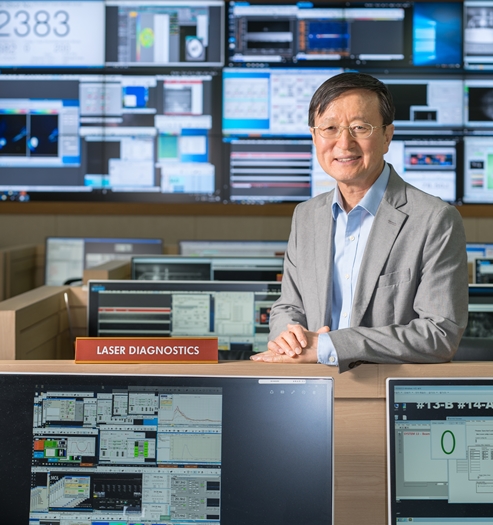The chirped pulse amplification technique has revolutionized high power laser research and opened the passage to develop ultrahigh power lasers. A brief partial history of CPA laser research in Korea is given here. The first CPA laser in Korea appeared in my lab at KAIST in 1998. It started from the construction of a femtosecond Ti:Sapphire oscillator pumped by an Ar ion laser loaned from a senior professor. Though the Ar ion laser showed the typical fluctuation, 5%, of a gas discharge laser, the Ti:Sapphire oscillator was extremely stable – almost no fluctuation on an oscilloscope. Encouraged by the performance of the femtosecond laser oscillator, a CPA laser was built by collecting such items as an Nd:YAG pump laser, stretcher and compressor gratings, Ti:Sapphire crystals, and optical components and mounts. Because no direct funding to construct the CPA laser was available, all these items were acquired one by one, mostly cheapest available ones, out of several small research funds. After efforts for almost 5 years, we achieved the surprising laser performance of 20 fs, 3 TW at 10 Hz, as compared to the usual result of 30 – 40 fs duration obtained by other leading laser labs, thanks to our finding of the long wavelength injection method.
After moving to Gwangju in 2012 to launch CoReLS, another chapter on CPA lasers, along with the continuation of attosecond science research, has been written. Several KAIST graduates took their jobs at APRI/GIST and participated the ultrashort quantum beam facility project started in 2003 and finished in 2012. Through the UQBF project two PW laser beamlines of 1 and 1.5 PW outputs at 30 fs were constructed. With the launch of CoReLS in the end of 2012 as an IBS research center, one of the PW laser beamlines was upgraded to a 4 PW laser in 2016, breaking again the world record in laser power, and we achieved the record high laser intensity of 5x1022 W/cm2 in 2018, which was further enhanced to 1x1023 W/cm2 in 2020 - a goal to realize by a number of prominent laser groups in the world. The PW lasers have been utilized for laser-driven charged particle acceleration and for fundamental laser-plasma interactions. We have produced nearly 100 MeV protons and multi-GeV electrons. Furthermore, with the completion of the 4 PW laser we are tackling laser-matter interactions at extreme laser intensity, i.e. strong field quantum electrodynamics. We have been intensively pursuing the experimental demonstration of nonlinear Compton scattering between a multi-GeV electron beam and an ultrahigh intensity laser. We will explore also the radiation reaction of electrons in an ultrahigh intensity laser field in the quantum regime and the electron-positron pair creation from the Breit-Wheeler process. From the exploration of electron-photon and photon-photon interactions in the strongly nonlinear regime we would like to write a new history on strong field physics, together with all the research and technical staffs and graduate students at CoReLS.
Director
Nam, Chang Hee



